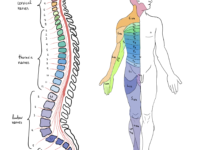New research suggests that childhood home environments may have a say in the aging process. Adverse childhood experiences (ACEs) are potentially traumatic events. They include all forms of abuse and neglect, but there are other ACEs such as exposure to parental substance use and parental incarceration. ACEs can have physical, mental, and emotional effects that reach into adulthood.
One of these physical effects is aging, which can be classified into two types. Chronological age refers to the number of years an individual has been alive. Biological or epigenetic age expresses how able and functioning an individual is, and increases at different rates for everyone. The term “epigenetic” refers to an environmental or behavioral influence on DNA. Epigenetic factors aren’t necessarily DNA mutations, making them reversible. These factors affect how the body reads DNA, rather than the DNA itself. Essentially, epigenetic age acceleration is a measure of whether individuals are aging faster or slower than their chronological age due to epigenetic factors.
In June 2023, Kyeezu Kim and her lab measured epigenetic aging of a cohort study at 15 and 20 years of follow-up. The study consisted of more than 800 adult participants with ACEs, recruited from the Coronary Artery Risk Development in Young Adults (CARDIA) study. The CARDIA study explores the determinants and development of cardiovascular disease, as well as its risk factors. It has been suggested by previous research that ACEs can modulate epigenetic pathways, such as aging, leading to health issues later in life. Kim and her team wanted to bridge the knowledge gap and explore the associations between ACEs and epigenetic age acceleration.
To measure epigenetic aging, the team used five different DNA methylation-based epigenetic age estimators: intrinsic epigenetic age acceleration (IEAA), extrinsic epigenetic age acceleration (EEAA), PhenoAge acceleration (PhenoAA), GrimAge acceleration (GrimAA), and Dunedin Pace of Aging Calculated from the Epigenome (DunedinPACE). DNA methylation is a cornerstone of epigenetics. It can change the activity of a DNA sequence, typically by repressing transcription, but does not change the sequence itself. These five age estimators served various roles in the study. IEAA and EEAA estimate age based on cell-intrinsic characteristics of the aging process as well as age-related changes in leukocyte (white blood cell) composition. PhenoAA and GrimAA estimate health and life span. DunedinPACE measures the pace of aging and can be used to represent physiological decline.
Kim’s team concluded that ACEs were associated with epigenetic age acceleration in middle aged adults. More specifically, individuals with four or more ACEs were likely to have older epigenetic ages compared with their chronological ages, due to lasting biological changes. These toxic stress-induced changes could include disrupted cellular properties, inflammation, impacted immunity, and an altered endocrine system. They also noted that results were typically consistent across subgroups including race and sex, indicating that ACEs are related to epigenetic age acceleration regardless of demographics.
Kim and her team reported several limitations to their study. First, participants were all middle-aged adults, but ACEs occur during childhood, so there is a possibility of a recall bias leading to misremembered events or details. Second, this study excluded certain ACEs: sexual abuse, parental separation/divorce, parental mental illness, and parental incarceration. While the reason for this exclusion is unknown, Kim’s lab emphasized the importance of further research that includes these unmeasured ACEs.
“The work done by Kim’s lab illustrates the need for expanding public health education to include childhood traumas and conditions.”
This research is critical to the current understanding of aging and the varying effects that environmental factors can have on an individual’s biology. It opens doors to future research in epigenetics, such as the role of behavior in DNA changes. or how ACEs relate to stress and resilience. The work done by Kim’s lab illustrates the need for expanding public health education to include childhood traumas and conditions. ACEs are important to include in medical histories and records to ensure the best care for patients. Many physical conditions have roots in mental or emotional traumas, which are crucial to consider in diagnosis, treatment prescription, and therapy. Future directions could also include research on early detection and intervention for health-related outcomes later in life. Furthermore, if scientists are able to discover the molecular mechanisms of epigenetic age acceleration, more medicinal and therapeutic research can be done to determine the best way to promote health for middle-aged adults with ACEs. Ultimately, the association between ACEs and epigenetic age acceleration highlights the need to prevent ACEs and to monitor individuals who have suffered them.






